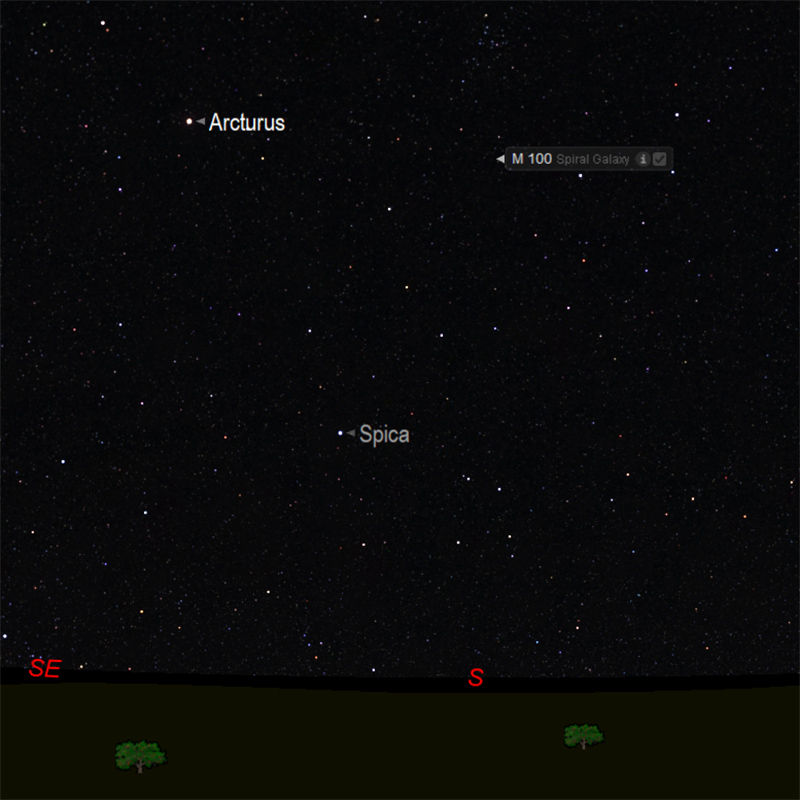M100

Credits: Keith Turnecliff, Nerja, Spain
M100 is a stunning example of a grand-design spiral galaxy.
The galaxy was discovered in 1781 by the French astronomer Pierre Méchain, Charles Messier’s fellow comet hunter who discovered eight comets in his lifetime.
M100 is located 56 million light-years away from Earth and appears dim in the night sky. Its apparent magnitude of 10.1 means that, while it can be seen through small telescopes, it will appear only as a faint patch of light.
Larger telescopes can resolve more details of this galaxy.
Facts about M100 by Keith Turnecliff
Messier 100 (also known as NGC 4321) is a grand design intermediate spiral galaxy located within the southern part of constellation Coma Berenices. It is one of the brightest and largest galaxies in the Virgo Cluster, located approximately 55 million light-years distant from Earth and has a diameter of 107,000 light years, roughly 60% the size of the Milky Way. It was discovered by Pierre Méchain on March 15, 1781 and was subsequently entered in Messier's catalogue of nebulae and star clusters after Charles Messier made observations of his own on April 13, 1781. The galaxy was one of the first spiral galaxies to be discovered, and was listed as one of fourteen spiral nebulae by Lord William Parsons of Rosse in 1850. NGC 4323 and NGC 4328 are satellite galaxies of M100; the former is connected with it by a bridge of luminous matter.

Best Viewed with resolution 1980 x 1020.
Credits: Image courtesy of Starry Night Pro Plus 8, researched and implemented by Keith Turnecliff.